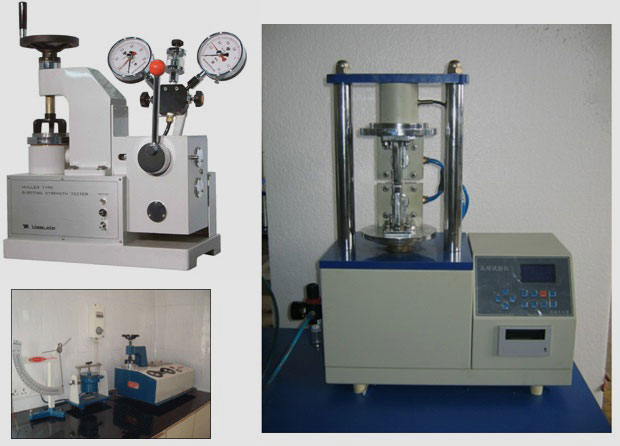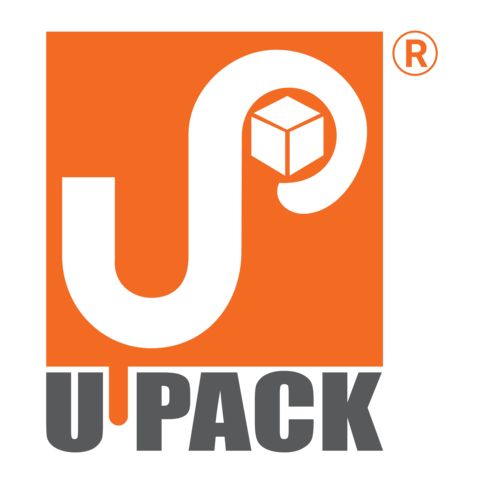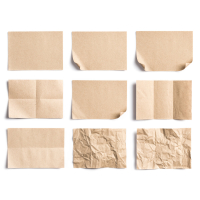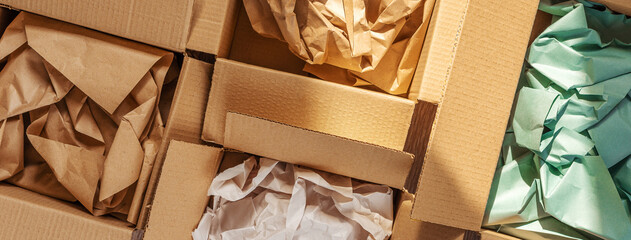GSM and BF of Kraft Paper
Types of GSM and BF in Recycled Kraft Paper in India for Making Corrugated Boxes
Introduction
Kraft paper is primarily used in the corrugated box packaging industry. In India, recycled Kraft paper is among the widely utilized types, and plays a crucial role in manufacturing multi-ply corrugated boxes, with the common ones being 3-ply, 4-ply (litho laminated), 5-ply, and 7-ply boxes. Sometimes even 9 ply and 11 ply boxes are made!
The key specifications that determine the quality and usability of Kraft paper are GSM (Grams per Square Meter) and BF (Burst Factor). These parameters influence the paper's strength, weight, thickness, and durability. Here, we'll explore different types of GSM and BF of recycled Kraft paper used for making multi-ply boxes.
What are GSM and BF?
GSM (Grams per Square Meter)
GSM is a metric that describes the weight of the paper per square meter. A higher GSM means a heavier and thicker paper, often indicating a higher quality product. For example, a newspaper might have a GSM of around 55, while a business card might be 350 GSM. The range of GSM values in paper production can vary significantly based on the intended use of the paper. Higher GSM values typically correlate with increased paper thickness and, subsequently, higher strength and stiffness. The type of box (3-ply, 5-ply, or 7-ply) is often associated with specific Board GSM values to ensure the box's durability and resilience.
Testing Paper GSM (Grams per Square Meter)
GSM (Grams per Square Meter) is a crucial parameter that specifies the weight of paper. It plays a significant role in determining the quality, thickness, and durability of the paper. Testing the GSM of paper involves a few steps that require precision and attention to detail.
Equipment Required
To test the GSM of paper, you'll need the following equipment:
- A cutting device to cut out a specified area of the paper. This could be a sharp knife, but ideally, it is a circular paper cutter that can cut out an area of exactly 0.01 square meters.
- A precision scale that can measure the weight in grams accurately.
- The kraft paper sample you want to measure.
Steps to Test Paper GSM
Follow these steps to test the GSM of a paper:
Prepare the Sample: Using the circular paper cutter, cut out a precise area of 1/100 square meters (e.g., a circle of 11.27 cm in diameter) from the paper sample. Ensure the paper is flat and free from creases or tears.
Weigh the Sample: Place the cut paper on the precision scale and record its weight in grams. Ensure that the weighing scale is tared (zeroed out) before placing the paper sample on it.
Calculate GSM: To calculate GSM, multiply the weight of the paper sample by 100. This is because the area of the paper sample is 1/100 of a square meter, so multiplying by 100 gives the weight in grams of one square meter of paper. The formula to calculate GSM is:
GSM = Weight of paper sample (in grams) x 100
It's important to remember that the weight measurement needs to be as accurate as possible because even small inaccuracies can lead to significant errors in the calculated GSM.
GSM and Paper Quality
The GSM of paper is an essential measure of its quality. A higher GSM indicates a heavier, thicker, and typically higher-quality paper. For instance, standard office paper usually has a GSM of around 80, while business cards may have a GSM of 350 or more. The right GSM for a particular application depends on the specific requirements of that application. We will discuss more on how to optimize the GSM and BF for a particular application of corrugated packaging boxes.
BF (Bursting Factor)
The Bursting Factor is a key indicator of the strength of Kraft paper. It signifies the pressure the paper can withstand before rupturing, calculated by a standard method. A higher BF means the paper has a higher burst strength, making it suitable for applications requiring superior quality and toughness.
The Bursting Strength Test
The Bursting Strength Test is the standard method for determining the BF of Kraft paper. The test measures the pressure required to burst the paper when a uniformly distributed and increasing pressure is applied to it. The Bursting Strength Test follows these steps:

Sample Selection: The first step is choosing a sample of the Kraft paper that is representative of the entire batch. This sample should be free of folds, creases, or any other deformations.
Setting up the Test: The paper sample is clamped onto the rubber diaphragm of a bursting strength tester. This machine is essentially a hydraulic press equipped with a pressure gauge.
Running the Test: Once the sample is firmly clamped, the test is initiated. The rubber diaphragm expands, applying increasing pressure to the paper sample. The process continues until the paper sample ruptures.
Recording the Result: The pressure at which the paper sample ruptures is recorded. This value is the Bursting Strength of the paper and is usually given in kilopascals (kPa) or pounds per square inch (psi).
Calculating Bursting Factor
After determining the Bursting Strength, we can calculate the Bursting Factor. BF is the ratio of Bursting Strength to the grammage (GSM) of the paper. Here's the formula:
Bursting Factor (BF) = Bursting Strength (kPa) / Grammage (GSM)
By performing this calculation, we obtain the Bursting Factor of the Kraft paper, which provides insights into its quality and suitability for various applications.
Types of Recycled Kraft Paper Based on GSM and BF
Low GSM (100-150) and Low BF (14-18)
This type of Kraft paper is lightweight and relatively less robust due to its lower GSM and BF. It is generally used for making 3-ply boxes, ideal for packaging lightweight items like cosmetics, pharmaceutical products, and small electronic items.
Medium GSM (180-200) and Medium BF (20-22)
This category offers a balanced combination of weight and strength. Its medium GSM and BF make it versatile, suitable for creating 3-ply and 5-ply boxes. These boxes are used to package slightly heavier items like books, toys, and kitchen appliances. At U-Pack we use 180 GSM paper to make our corrugated carton boxes.
High GSM (230-250) and High BF (24-28)
High GSM and high BF Kraft paper offer the best strength and durability. It is commonly used to manufacture 5-ply and 7-ply boxes, perfect for shipping heavier items like home appliances, machinery, and automotive parts.
Kraft Paper Industry
India's Kraft paper industry is experiencing growth with the rise in demand for eco-friendly packaging solutions. Several Indian companies offer a wide range of recycled Kraft paper with different GSM and BF values, tailored to cater to varying needs.
For instance, 'West Rock' and 'ITC Paper Mills' are two renowned manufacturers producing high-quality recycled and virgin Kraft paper. They offer a wide variety of GSM and BF ranges, thus catering to diverse industrial requirements. Other noteworthy players include 'Tamil Nadu Newsprint and Papers Ltd' and 'Seshasayee Paper and Boards Ltd', contributing significantly to India's Kraft paper production.
Determining Optimum GSM and BF of Kraft Paper for Making Corrugated Boxes
Corrugated boxes, extensively used in the packaging industry, require Kraft paper with specific characteristics to ensure their durability, strength, and reliability. Two of the most significant properties are the Grams per Square Meter (GSM) and the Bursting Factor (BF), which determine the weight, thickness, and strength of the paper. This article will guide you on how to determine the optimum GSM and BF of Kraft paper for making corrugated boxes.
Understanding the Functionality of Corrugated Boxes
Before diving into determining the optimum GSM and BF, it's essential to understand the functionality and structure of a packaging box. A corrugated carton box typically consists of three layers: a wavy, corrugated inner layer sandwiched between two outer liner layers. Each layer contributes to the box's strength and rigidity. The combination of layers, the number of flutes (waves in the corrugated layer), and the quality of the Kraft paper used in each layer determine the overall strength and performance of the box.
Determining the Optimum GSM
The GSM of Kraft paper influences the weight, thickness, and, indirectly, the strength of the corrugated box. As a general rule, heavier (higher GSM) Kraft paper will make a sturdier cartoon box. However, it is important to note that a balance must be struck. Using very high GSM paper might make the box unnecessarily heavy and expensive, while a too low GSM might compromise the box's strength leading to damage in courier.
Determining the optimum GSM involves considering the weight and fragility of the items to be packed, as well as the handling and shipping conditions the box is expected to endure. For example, for lightweight and less fragile items, or for boxes used in benign conditions, a GSM range of 120-150 may suffice. For heavier, more fragile items, or for boxes that need to withstand harsher handling and shipping conditions, a higher GSM (e.g., 200-250 GSM) may be more suitable.
Determining the Optimum BF
The Bursting Factor (BF) of Kraft paper represents its strength. The higher the BF, the stronger and more resistant to rupture the paper will be. A higher BF will provide better protection to the items inside the box, especially under high-pressure conditions during transportation or storage.
Similar to GSM, determining the optimum BF requires considering the specific needs of the box. For boxes carrying heavy or high-value items, a high BF (e.g., 25-35 BF) might be necessary. Conversely, for lighter, less valuable items, a lower BF (e.g., 16-20 BF) might be sufficient. Sometimes for critical applications, 50+ BF papers are used to ensure highest protection.
While the weight and fragility of the items, along with the expected handling and shipping conditions, provide a good starting point for determining the optimum GSM and BF, actual trial and error are often necessary. Testing boxes made with different GSM and BF Kraft paper under conditions that mimic real-world handling and shipping can provide valuable insights and help fine-tune the GSM and BF selections.
The Role of Recycled Kraft Paper in Sustainable Packaging
As the world shifts towards more sustainable practices, the demand for recycled Kraft paper is increasing. It is produced using recovered paper and cardboard, significantly reducing waste and energy consumption. Additionally, it's biodegradable and recyclable, minimizing environmental impact.
In India, many industries embrace recycled Kraft paper for their packaging needs, acknowledging its strength, flexibility, and eco-friendliness. The multi-ply box industry is one such sector, where recycled Kraft paper of varying GSM and BF is extensively used.
Conclusion
The GSM and BF of recycled Kraft paper play an essential role in determining its suitability for various applications. In India, manufacturers offer a broad spectrum of GSM and BF combinations to meet the growing demand for durable and sustainable packaging solutions. Unlike the US and Canada, there is no standardization of basis weight and Mullen on kraft paper industry yet.
As the multi-ply carton box industry continues to evolve, the role of recycled Kraft paper contributes towards a greener tomorrow.


